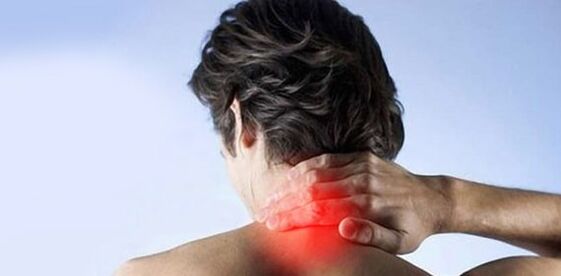
The defeat of the intervertebral disc of a degenerative-dystrophic nature, which occurs in the cervical spine as a result of metabolic disorders, is called cervical osteochondrosis. The processes of these changes are irreversible and over time can cause very serious health problems.
Osteochondrosis of the cervical spine is rapidly tapering, and nowadays the disease often manifests itself in very young patients. And there is nothing to be said about old age - almost everyone has one or the other problem with their neck. Surely many are familiar with the concept of "pinched the nerve" when it is impossible to turn your head? And this is one of the most unpleasant manifestations of this insidious disease, which, without qualified treatment, will become more and more reminiscent of itself
Any type of osteochondrosis has serious complications, so do not delay treatment.
Causes of Cervical Osteochondrosis
The following causes of osteochondrosis of the spine are distinguished, which sooner or later, accumulating, lead to the appearance of certain changes in the bone and cartilage tissue of the upper vertebrae:
- The scourge of our time is a sedentary way of life and, above all, the static position during the day, also in front of the computer. The vertebrae are not adequately supplied with nutrients and blood, which is why their structure changes undesirably.
- Age-related changes in cartilage tissue. This is inevitable for almost everyone over fifty and sometimes even earlier.
- Lifelong spinal injuries. Because of this, professional athletes often have a history of neck pain.
- Overweight - extra pounds increase the load on the entire spine, which also affects the neck.
- Incorrect metabolism in the body, caused by bad habits and poor diet, also contributes to the development of pathologies in the spine.
Symptoms of cervical osteochondrosis
The following symptoms of cervical osteochondrosis indicate the problems that exist in the functioning of the body:
- They worry about frequent headaches accompanied by dizziness, flying and darkening of the eyes, and general weakness.
- Turning the head to the side is limited and painful.
- There is pain in the neck, shoulder blades and chest, as well as in the arms.
- They are characterized by inexplicable and frequent pressure drops.
- There is numbness in the fingers or hands and movement of the tongue is restricted.
- Tinnitus and other hearing problems are present.
- You feel insecure when walking, stagger.
Methods of treating osteochondrosis of the cervical spine
Of course, doctors all over the world are trying to solve such an important task as treating osteochondrosis of the cervical spine, and not without success. Currently the disease has been well studied and with the right approach can be well contained so that the patient can lead a full life without limitations and pain. Doctors use the following methods to mitigate and eliminate the manifestations of osteochondrosis:
- Acupressure. You will feel much better with the oldest techniques of Chinese and Tibetan medicine.
- Moxotherapy, Tszyu therapy, hirudotherapy. After such unconventional procedures, osteochondrosis will recede for a long time.
- Acupuncture (reflexology). One of the most effective techniques, the core of which is to insert the thinnest needles into specific areas of the patient's body at different depths. They create a strong reflex reaction that has a positive effect on the cervical spine.
- Traction techniques. They are based on the effect of two forces that act in opposite directions on the human body and accordingly reduce the pressure in the intervertebral discs.
- Phytotherapy and physiotherapy exercises. Proper physical exercises, selected by an experienced specialist, are the key to your success.
- PRP therapy is the newest way to stimulate regenerative processes. It is used to restore the functions of various organs after illness and injury, including restoring the function of the musculoskeletal system.




























